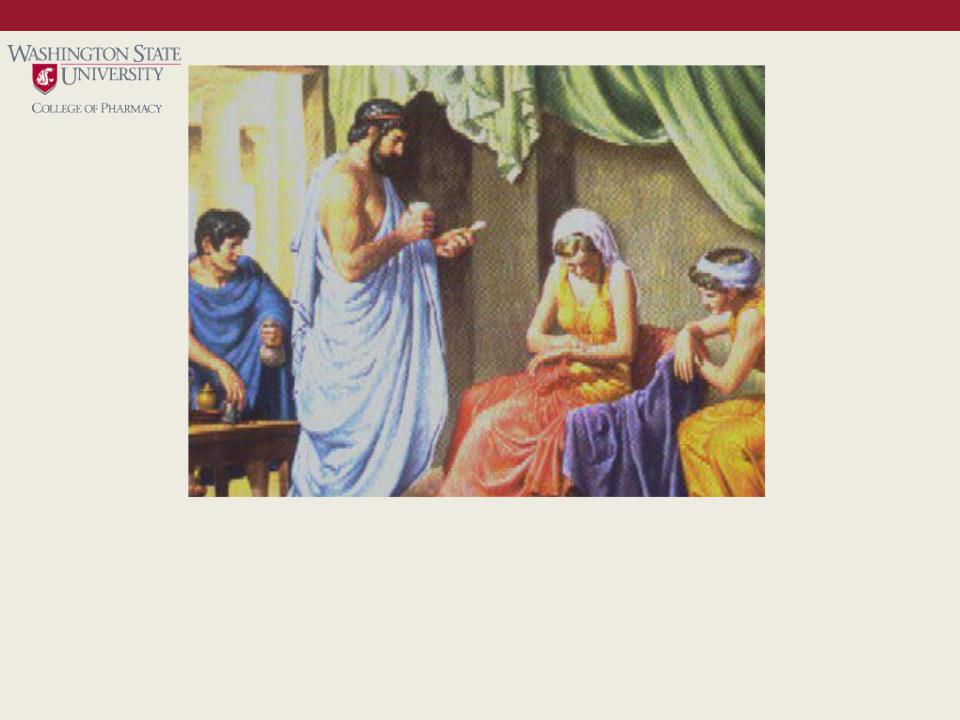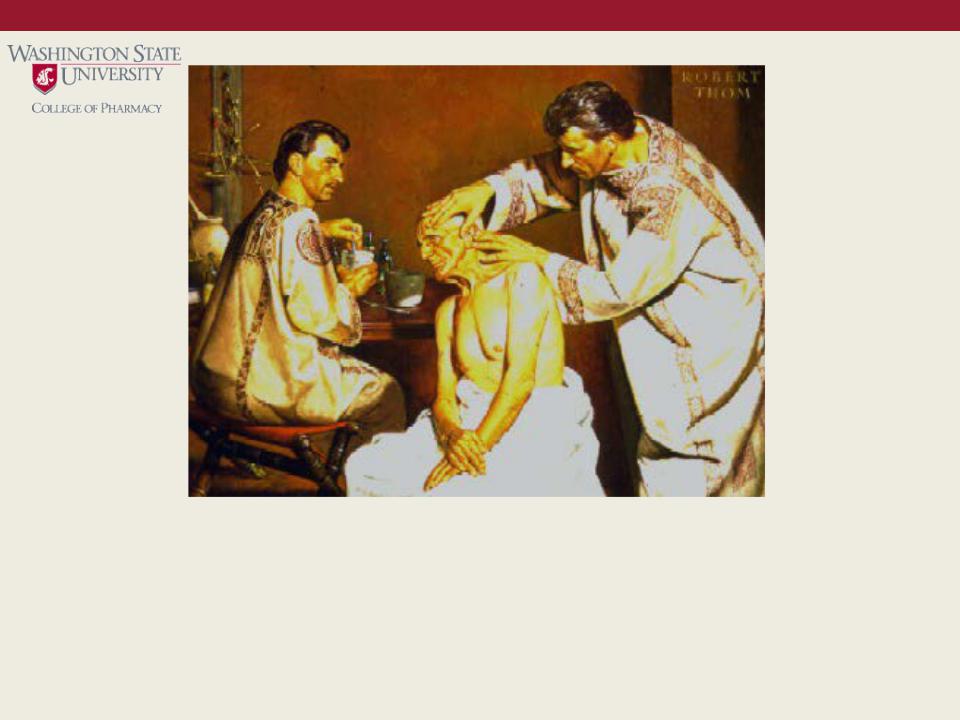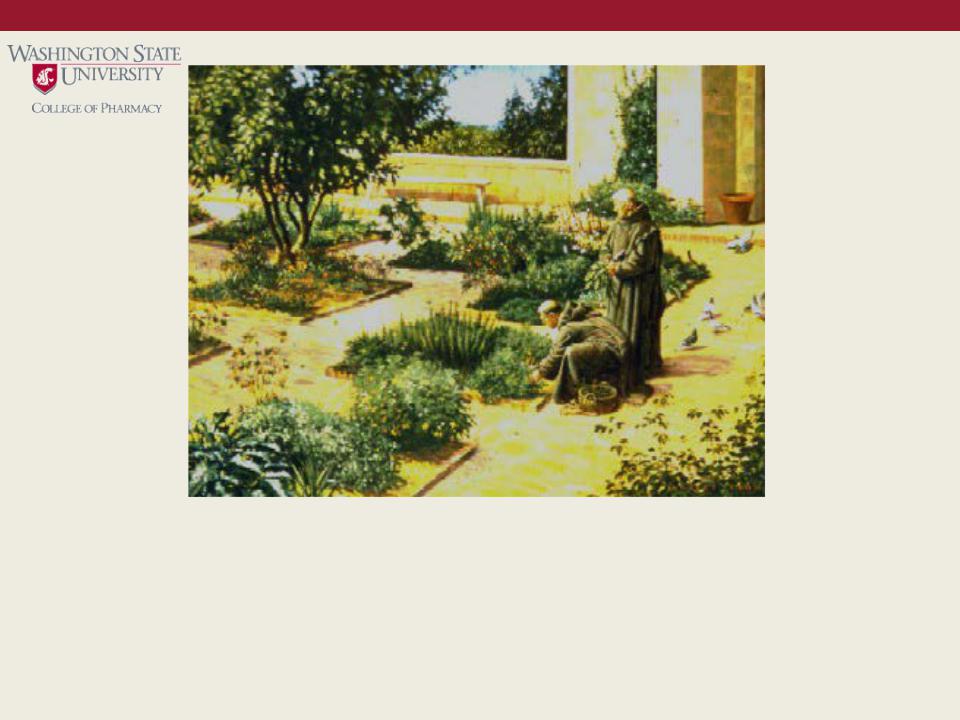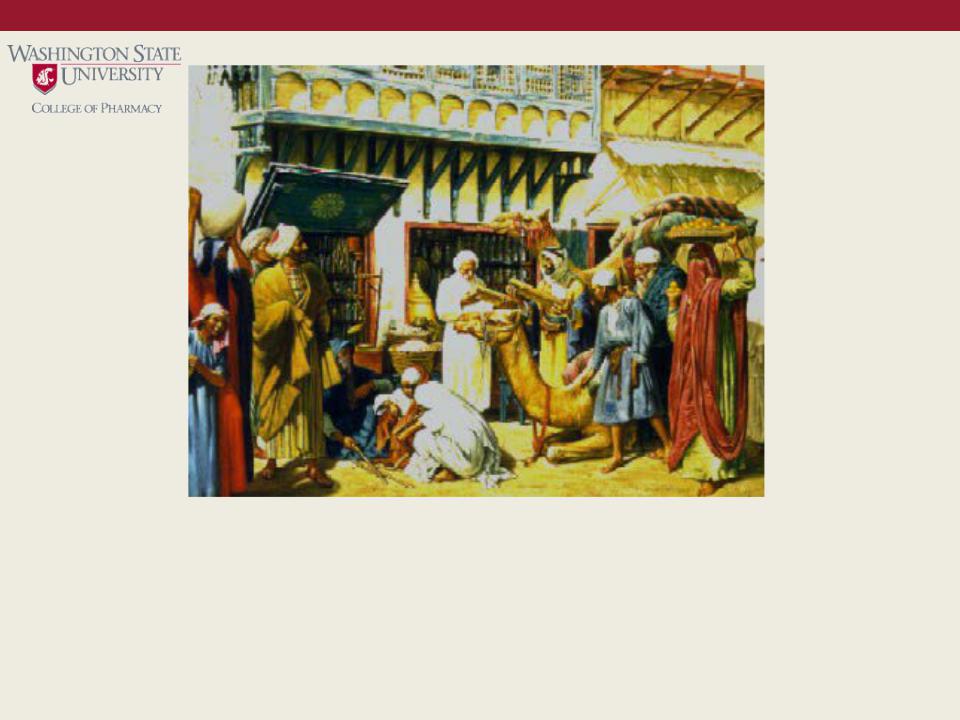
- •1. Before the Dawn of History
- •2. Pharmacy in Ancient Babylonia
- •3. Pharmacy in Ancient China
- •4. Days of the Papyrus Ebers
- •5. Theophrastus – Father of Botany
- •6. The Royal Toxicologist – Mithridates VI
- •7. Terra Sigillata – An Early “Trademarked” Drug
- •8. Dioscorides – A Scientist Looks at Drugs
- •9. Galen – Experimenter in Drug Compounding
- •10. Damian and Cosmas – Pharmacy’s Patron Saints
- •11. Monastic Pharmacy
- •12. The First Apothecary Shops
- •13. Avicenna – The “Persian Galen”
- •14. Separation of Pharmacy and Medicine
- •15. The First Official Pharacopeia
- •16. The Society of Apothecaries of London
- •17. Louis Hébert, Apothecary to New France (Canada)
- •18. The Governor who Healed the Sick
- •19. The Marshall Apothecary
- •20. First Hospital in Colonial America
- •21. Scheele – Greatest of the Pharmacists-Chemists
- •22. Craigie – America’s First Apothecary General
- •23. Sertürner – First of the Alkaloid Chemists
- •24. Caventou, Pelletier and Quinne
- •25. American Pharmacy Builds its Foundations
- •26. The Shakers and Medicinal Herbs
- •27. The American Pharmaceutical Association
- •28. European and American Pharmacy Meet
- •29. The Father of American Pharmacy
- •30. A Revolution in Pharmaceutical Education
- •31. The Pharmacopeia Comes of Age
- •32. The Standardization of Pharmaceuticals
- •33. Wresting the Jungle’s Secrets
- •34. Stanislas Limousin – Pharmacal Inventor
- •35. The Era of Biologicals
- •36. The Development of Chemotherapy
- •37. Pharmaceutical Research
- •38. Pharmaceutical Manufacturing Comes of Age
- •39. The Era of Antibiotics
- •40. Pharmacy Today and Tomorrow

9. GALEN – EXPERIMENTER IN DRUG COMPOUNDING
Of the men of ancient times whose names are known and revered among both the professions of Pharmacy and Medicine, Galen, undoubtedly, is the foremost. Galen (130-200 A.D.) practiced and taught both Pharmacy and Medicine in Rome; his principles of preparing and compounding medicines ruled in the Western world for 1,500 years; and his name still is associated with that class of pharmaceuticals compounded by mechanical means - galenicals. He was the originator of the formula for a cold cream, essentially similar to that known today. Many procedures Galen originated have their counterparts in today's modern compounding laboratories.

10. DAMIAN AND COSMAS – PHARMACY’S PATRON SAINTS
Twinship of the health professions, Pharmacy and Medicine, is nowhere more strikingly portrayed than by Damian, the apothecary, and Cosmas, the physician. Twin brothers of Arabian descent, and devout Christians, they offered the solace of religion as well as the benefit of their knowledge to the sick who visited them. Their twin careers were cut short in the year 303 by martyrdom. For centuries their tomb in the Syrian city of Cyprus was a shrine. Churches were built in their honor in Rome and other cities. After canonization, they became the patron saints of Pharmacy and Medicine, and many miracles were attributed to them.

11. MONASTIC PHARMACY
During the Middle Ages remnants of the Western knowledge of Pharmacy and Medicine were preserved in the monasteries (fifth to twelfth centuries). These scientists are known to have been taught in the cloisters as early as the seventh century. Manuscripts from many islands were translated or copied for monastery libraries. The monks gathered herbs and simples in the field, or raised them in their own herb gardens. These they prepared according to the art of the apothecary for the benefit of the sick and injured. Gardens such as these still may be found in monasteries in many countries.

12. THE FIRST APOTHECARY SHOPS
The Arabs separated the arts of apothecary and physician, establishing in Bagdad late in the eighth century the first privately owned drug stores. They preserved much of the Greco-Roman wisdom, added to it, developing with the aid of their natural resources syrups, confections, conserves, distilled waters and alcoholic liquids. The apothecary is examining logs of sandalwood offered by a traveling merchant, while children indulge their taste for sweets with stalks of sugar cane. When the Moslems swept across Africa, Spain and southern France, they carried with them a new pattern of Pharmacy which western Europe soon assimilated.
